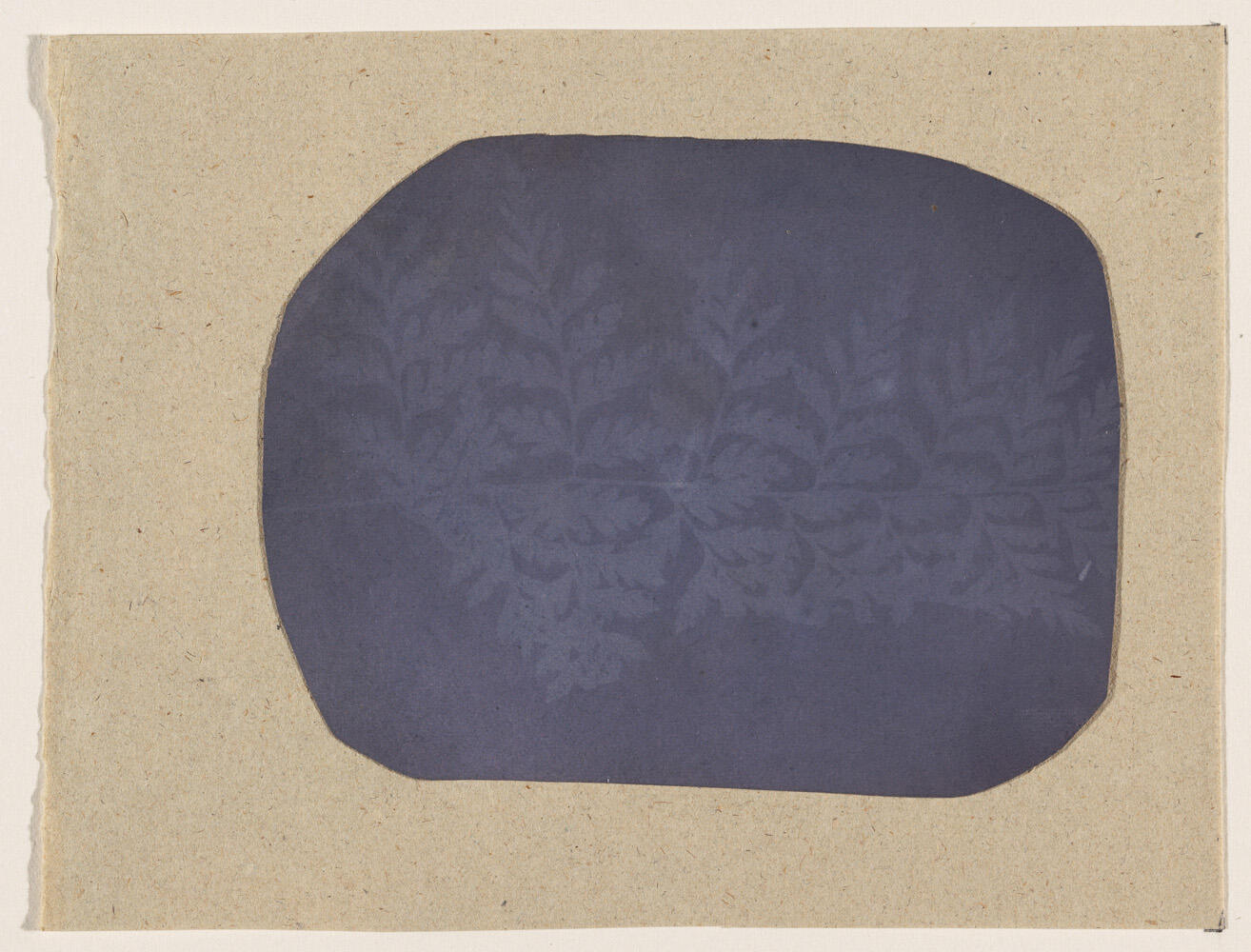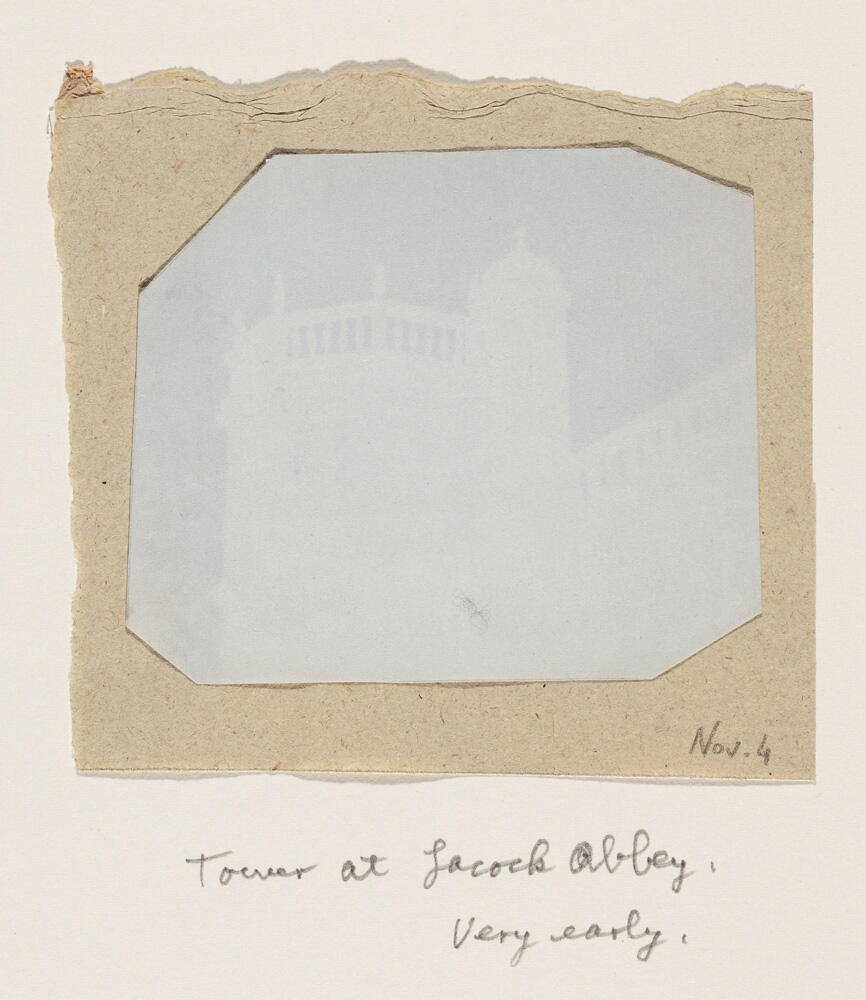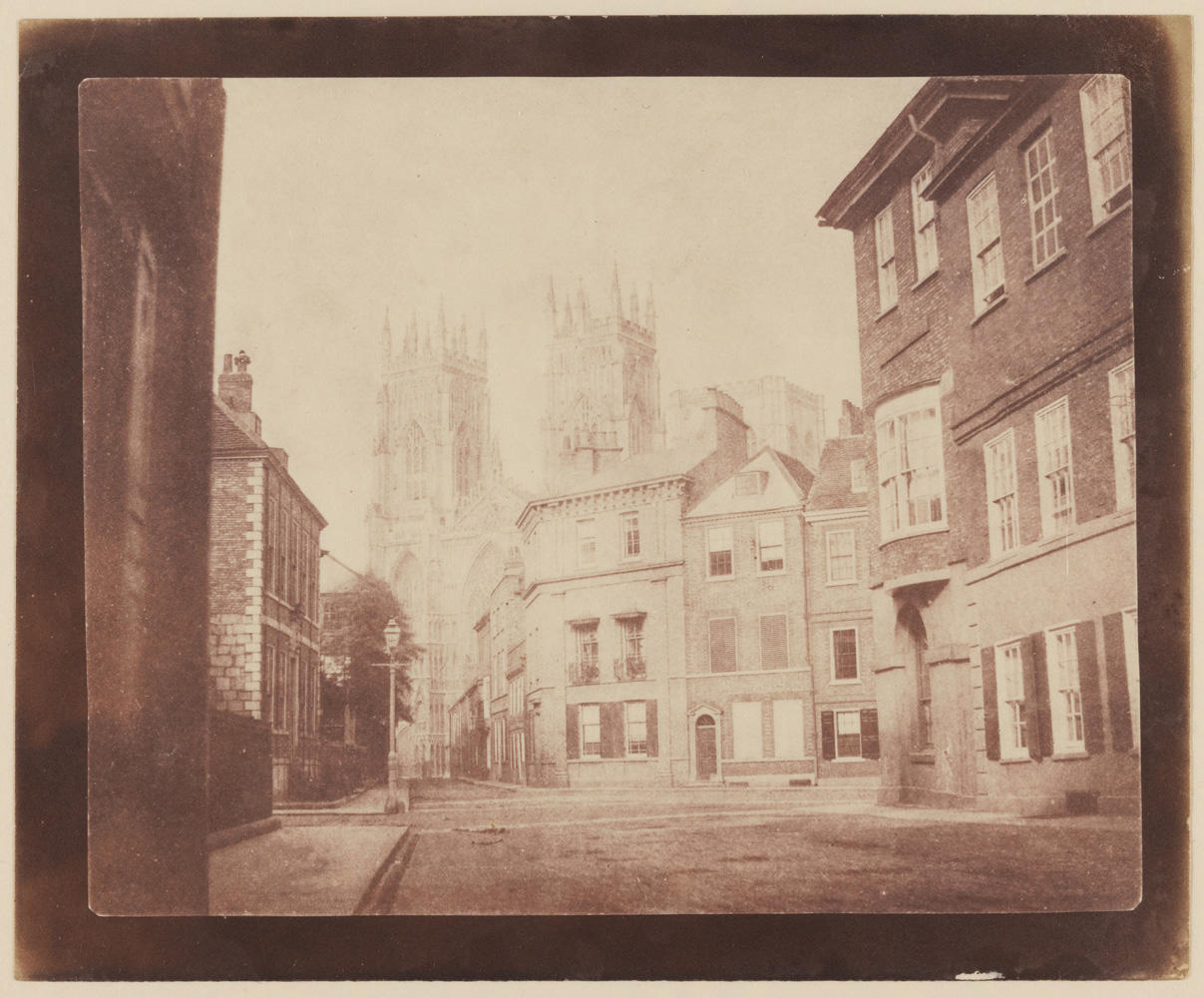
A Fellow of the Royal Astronomical Society and a member of Parliament, William Henry Fox Talbot had an interest in astronomy, philosophy, chemistry, optics, and botany. In 1834, he discovered how to create photogenic drawings, meaning drawings produced by light. The process involved sensitizing writing paper by dipping it in a solution of sodium chloride and coating one side with silver nitrate. An impression of an object was then made by placing it on the sensitized side of the paper and exposing it to the sun. Talbot ultimately went on to create photographic negatives (calotypes) in a camera obscura, from which multiple positive images (salted paper prints) could be produced. The Horblit Collection at Houghton Library encompasses the full range of Talbot’s materials including early photogenic drawings, calotype negatives, and salted paper prints.

